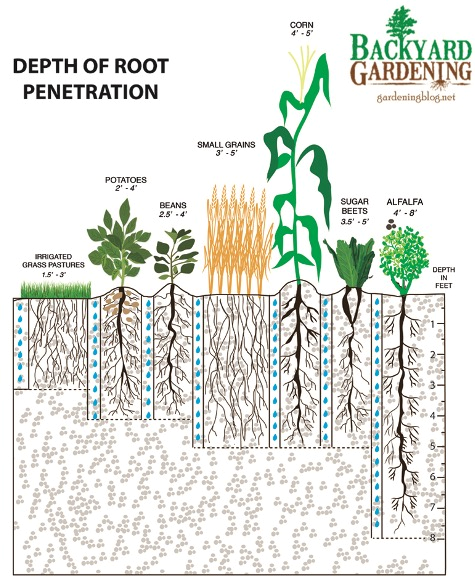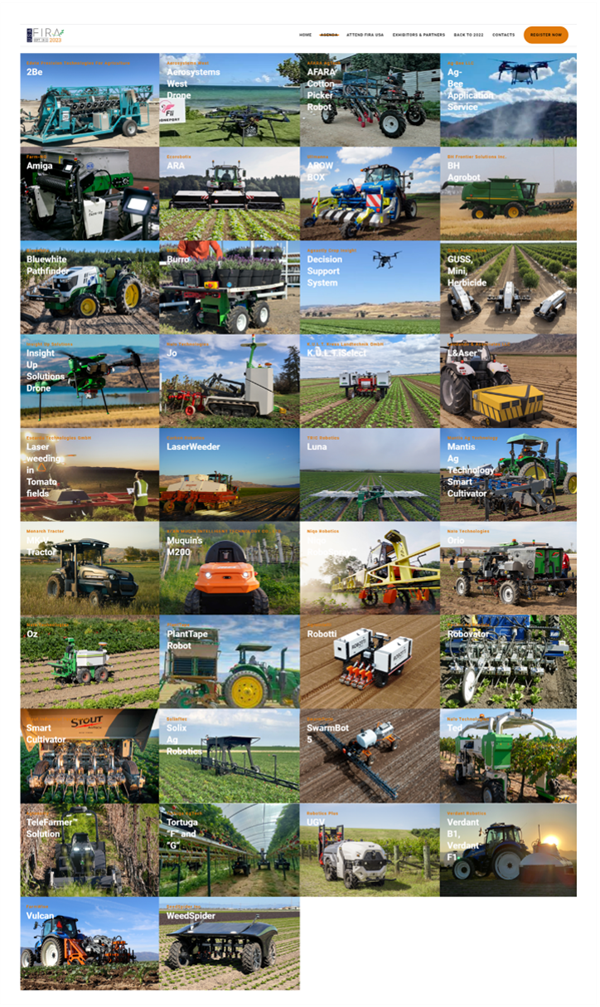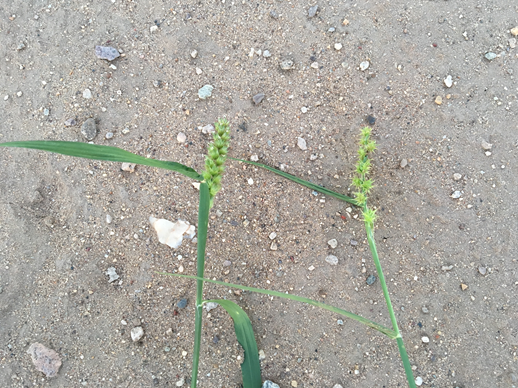
Author’s Note:
I recognize alfalfa is not a vegetable crop per se, but I also recognize that alfalfa has become an emblematic crop for desert agriculture, particularly in the water resource arena. In recent weeks alfalfa production in Arizona has come under intense scrutiny and criticism by state leaders. The Arizona Attorney General has been quoted as stating that alfalfa production in Arizona is “stupid” and leases of state land being used for alfalfa production are being considered for cancelation (Fischer, 4 October 2023). This is a point of concern for Arizona agriculture and the possible regulatory implications regarding what crops should be irrigated and grown. Alfalfa is an important crop, and it is grown in Arizona for good reasons, some of which are described in this article.
Merits of Alfalfa Production in the Desert Southwest
Alfalfa is a major crop in Arizona, the desert Southwest, and most parts of the United States. Alfalfa has been planted to the largest acreage of any crop in Arizona for several years with about 260,000 acres being grown in 2023 (USDA, 2023 and Table 1).
Alfalfa is an extremely important crop due to its rich nutritional value as feed for animals, particularly cattle, horses, and sheep. In Arizona and the desert Southwest alfalfa has high value as nutritious feed for dairy and beef cattle. Most fresh dairy products are sold within about 300 miles of their point of origin.
Arizona’s population of 7.3 million people has a high demand for fresh dairy products. Arizona has 90% of the population living in urban areas. Over 6 million people in Arizona reside in Maricopa, Pinal, and Pima counties in the central and southern part of the state (82% of Arizona’s population). It is not surprising that there is a high concentration of dairies in central Arizona and alfalfa is grown near the dairies to provide a local source of high-quality forage.
Alfalfa is often demonized as a very poor crop choice in Arizona and the desert, usually by people outside of agriculture who are probably well-intentioned but not well-informed. These attitudes and opinions serve to remind us of Dwight D. Eisenhower’s statement at Bradley University in September 1956 when he said, “You know, farming looks mighty easy when your plow is a pencil, and you’re a thousand miles from the corn field.”
People who criticize and complain about alfalfa production in Arizona should consider their needs for fresh dairy products. If they are drinking milk, eating ice cream, yogurt, and butter they are consuming alfalfa as secondary consumers after the dairy cattle have rendered fresh milk from a healthy diet including alfalfa. Thus, Arizonans are the direct beneficiaries of local alfalfa production.
In the case of alfalfa, it is in fact an excellent crop for Arizona and the desert Southwest and a favorite among agronomists (crop and soil scientists), farmers, and farm managers (Putnam, 2015; Mostafa, 2015; and Yost, 2020). Alfalfa is an important crop in the desert Southwest and it provides important contributions to crop production system efficiency agronomically, economically, and environmentally. Several good reasons for growing alfalfa in the desert are summarized in the following points:

Figure 1. Alfalfa rooting depth compared to several other common
crops. Source: Backyard Gardening Blog
Alfalfa production supports other food products, primarily dairy and meat. Reductions in alfalfa acres will in turn require a greater reliance on food from non-local sources, including those imported from abroad. This will likely increase food prices and extend the supply chain.
This point was illustrated in the following written testimony provided by the Family Farm Alliance to the U.S. House of Representatives Subcommittee on Water, Wildlife and Fisheries in March 2023 (U.S. House of Representatives Natural Resources Committee, 2023):
"The Western U.S. is a critical part of what has long been a proud national agricultural powerhouse, where our country consistently has run an agricultural trade surplus. But in 2019, for the first time in more than 50 years, the U.S. agriculture system ran an agricultural trade deficit, importing more than it exported. The USDA forecasts the U.S. will again run a deficit in 2023 for the third time since 2019. This growing deficit is driven primarily by our dependence on imported Mexican fruits and vegetables (Politico Pro DataPoint). Increased reliance on foreign food has never been, and should never be a policy our Nation has intentionally embraced."
Agri-Environmental Scheme of Agriculture
It is interesting to note that alfalfa is recognized as an important crop in what is often referred to as “sustainable agriculture” or “regenerative agriculture” that emphasizes the use of natural systems for enhancing soil health and plant community ecology.
Alfalfa has been a popular a crop rotation component in Europe, and encouraged globally, as an element of the Agri-Environmental Scheme (AES), which is intended to reduce the impacts of “commercial” agriculture intensification on the environment (Gonzalez del Portillo, et al. 2022).
The Agri-Environmental Scheme (AES) offers the following attributes of alfalfa which are consistent with our basic agronomic understanding for many decades:
• Alfalfa also may help reduce the impacts of climate change due to canopy cover of the soil for a longer period than any other crop, alfalfa is envisioned as a leading option for soil carbon sequestration, also known as “regenerative agriculture,” especially with the need to decrease carbon emissions and introduce the carbon credits initiative.
• Alfalfa is a rich habitat for wildlife allowing for a diversity of local niches and preserving many endangered species from different animal families.
• Alfalfa fields are important contributors to the biodiversity of agricultural systems by functioning as insectaries for beneficial insects, many of which are pollinators or natural enemies that play important roles in the low desert agroecosystem.
• Beneficial insects move from alfalfa fields into other crops, where they play crucial roles in pollination and biological control.
• These roles reduce the reliance on synthetic insecticides, which if used incorrectly could have negative impacts on human, animal, and environmental health.
• Western alfalfa production, due primarily to irrigation and the vigorous plants that grown, provides a rich habitat for insects, which enhances the crop ecology.
• The year-round insectary characteristic allows alfalfa to play an important role in insecticide resistance management by serving as a refuge, i.e., aphids and whiteflies.
Arizona Crop Acreages 2022
|
Crop |
Seasonal Water Use (inches) |
Total Acres (2022) |
|
Alfalfa |
74.3 |
260,000 |
|
Cotton |
41.2 |
86,000 |
|
Wheat |
25.8 |
|
|
Corn |
32 |
44,000 |
|
Lettuce |
8.5 |
27,000 |
|
Broccoli |
19.7 |
11,600 |
|
Cauliflower |
18.6 |
6,000 |
|
Lemons |
39.1 |
6,700 |
|
Spring Cantaloupes |
20.5 |
6,000 |
*Seasonal water use estimates from Erie, et al. 1981 unless otherwise noted.
**Norton and Silvertooth, 2001
References:
Del Portillo, D.G, B. Arroyo & M.B. Morales (2022) The adequacy of alfalfa crops as an agri-environmental scheme: A review of agronomic benefits and effects on biodiversity. Journal for Nature Conservation 69(2):126253.
Erie, L.J., O.A French, D.A. Bucks, and K. Harris. 1981. Consumptive Use of Water by Major Crops in the Southwestern United States. United States Department of Agriculture, Conservation Research Report No. 29.
Fischer, H. 4 October 2023. Arizona cancels a lease for farm that exports alfalfa to Middle East. Tucson Daily Star.
Norton, E.R. and J.C. Silvertooth. 2001. Evaluation of a drip vs. furrow irrigated cotton production system. Cotton, A College of Agriculture Report Series P-125, University of Arizona, Tucson, AZ. p. 126-132.
Mostafa, A.M. 2015. The Benefits of Alfalfa to the Southwest Ecosystem. Arizona Agriculture.
Putnam, D. 2015. Why alfalfa is the best crop to have in a drought. University of California- Davis. Alfalfa and Forage News.
U.S. House of Representatives Committee on Natural Resources; The Water, Wildlife and Fisheries Subcommittee. Farm Family Alliance written testimony, March 2023.
USDA. 2022. State Agriculture – Arizona.
USDA. 2023. News Release: NASS, 30 June 2023 Arizona crop report.
USDA. 2023. October 2023 Pacific Region crop production report.
Yost, M., N. Allen, E. Creech, D. Putnam, J. Gale & G. Shewmaker. 2020. Ten Reasons Why Alfalfa is Highly Suitable for the West. Utah State University Extension.
This study was conducted at the Yuma Valley Agricultural Center. The soil was a silty clay loam (7-56-37 sand-silt-clay, pH 7.2, O.M. 0.7%). Spinach ‘Meerkat’ was seeded, then sprinkler-irrigated to germinate seed Jan 13, 2025 on beds with 84 in. between bed centers and containing 30 lines of seed per bed. All irrigation water was supplied by sprinkler irrigation. Treatments were replicated four times in a randomized complete block design. Replicate plots consisted of 15 ft lengths of bed separated by 3 ft lengths of nontreated bed. Treatments were applied with a CO2 backpack sprayer that delivered 50 gal/acre at 40 psi to flat-fan nozzles.

Downy mildew (caused by Peronospora farinosa f. sp. spinaciae)was first observed in plots on Mar 5 and final reading was taken on March 6 and March 7, 2025. Spray date for each treatments are listed in excel file with the results.
Disease severity was recorded by determining the percentage of infected leaves present within three 1-ft2areas within each of the four replicate plots per treatment. The number of spinach leaves in a 1-ft2area of bed was approximately 144. The percentage were then changed to 1-10scale, with 1 being 10% infection and 10 being 100% infection.
The data (found in the accompanying Excel file) illustrate the degree of disease reduction obtained by applications of the various tested fungicides. Products that provided most effective control against the disease include Orondis ultra, Zampro, Stargus, Cevya, Eject .Please see table for other treatments with significant disease suppression/control. No phytotoxicity was observed in any of the treatments in this trial.
Interested in staying up to date on the latest robotic ag technologies? FIRA USA and a number of other entities are organizing a 3-day forum focused on autonomous farming and agricultural robotics solutions. The event will be held September 18-21 in Salinas, CA. The program includes top-level keynote speakers, breakout sessions, a trade show and field demos. Over 35 robots will be demoed and/or on display including 12 machines designed for weeding vegetable crops. Some of the latest technologies for in-row weeding will be featured including lasers (3 companies), high voltage electricity and high precision spot spraying (3 companies). If you are interested in ag tech, FIRA 2023 promises to be a quality event and one well worth attending. For more information, visit https://fira-usa.com/.

Fig. 1. Robotic technologies on display and being demoed in
the field at FIRA USA 2023. Event will be held September 19-21st in
Salinas, CA. (Photo credits: FIRA USA).
|
Barnyardgrass |
Echinochloa crus-galli |
|
Red sprangletop |
Leptochloa filormus |
|
Prairie Cupgrass |
Eriochloa contracta |
|
Field sandbur |
Cenchrus spinifex |
|
Yellow foxtail |
Setaria glauca |
|
Feather fingergrass |
Chloris virgata |
|
Crowfootgrass |
Dactyloctenium aegyptium |
|
Junglerice (Watergrass) |
Echinochloa colona |
|
Mexican sprangletop |
Leptochloa fusca |
|
Southwestern Cupgrass |
Eriochloa acuminata |
|
Southern sandbur |
Cenchrus echinatus |
|
Green foxtail |
Setaria viridis |
|
Sixweeks grama |
Bouteloua barbata |

Figure 1. Left southern sandbur and right field sandbur
Results of pheromone and sticky trap catches can be viewed here.
Corn earworm: CEW moth counts down in all traps over the last month; about average for December.
Beet armyworm: Moth trap counts decreased in all areas in the last 2 weeks but appear to remain active in some areas, and average for this time of the year.
Cabbage looper: Moths increased in the past 2 weeks, and average for this time of the season.
Diamondback moth: Adults increased in several locations last, particularly in the Yuma Valley most traps. Below average for December.
Whitefly: Adult movement remains low in all areas, consistent with previous years
Thrips: Thrips adult movement continues to decline, overall activity below average for December.
Aphids: Winged aphids still actively moving but declined movement in the last 2 weeks. About average for December.
Leafminers: Adult activity down in most locations, below average for this time of season.